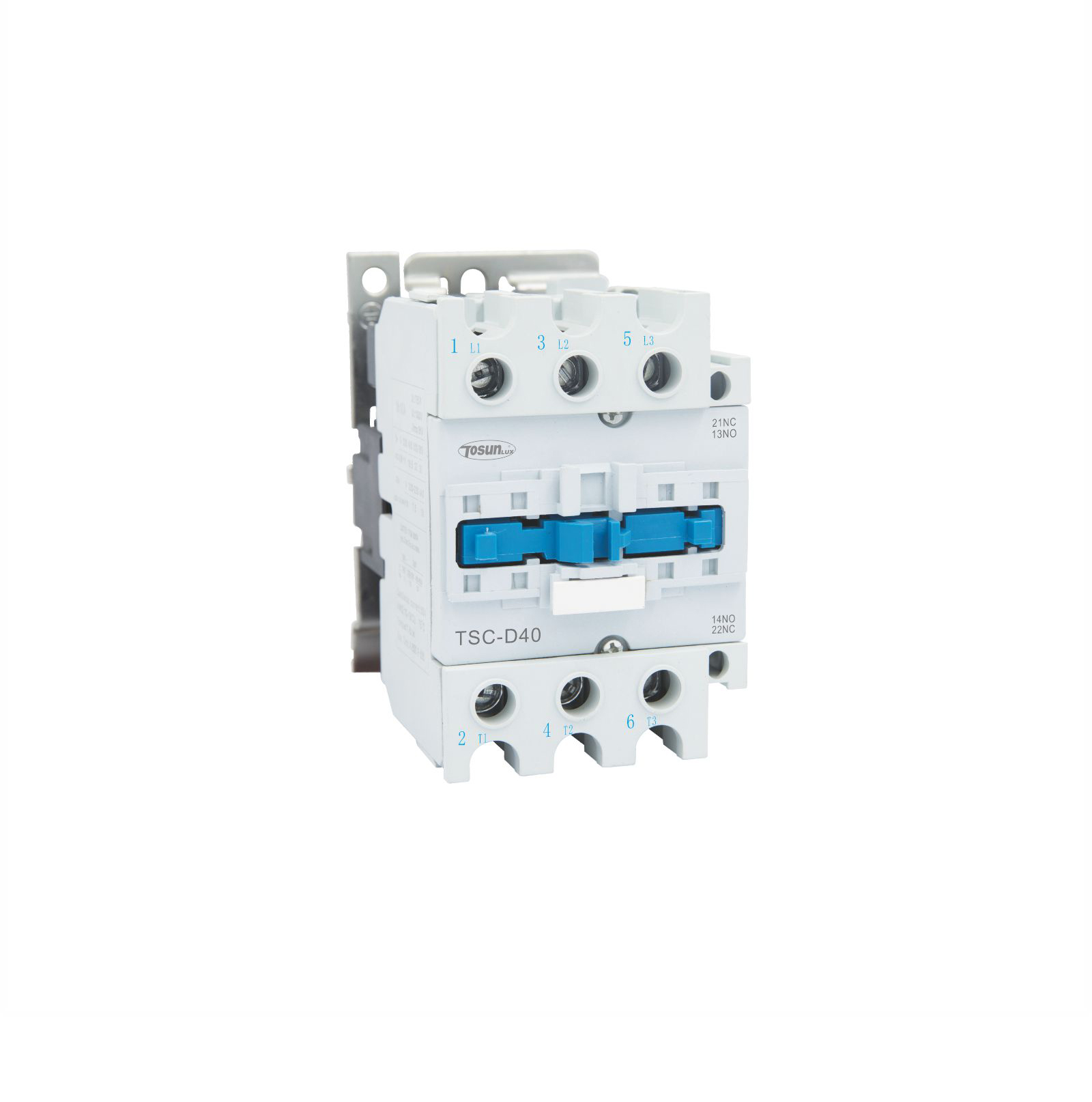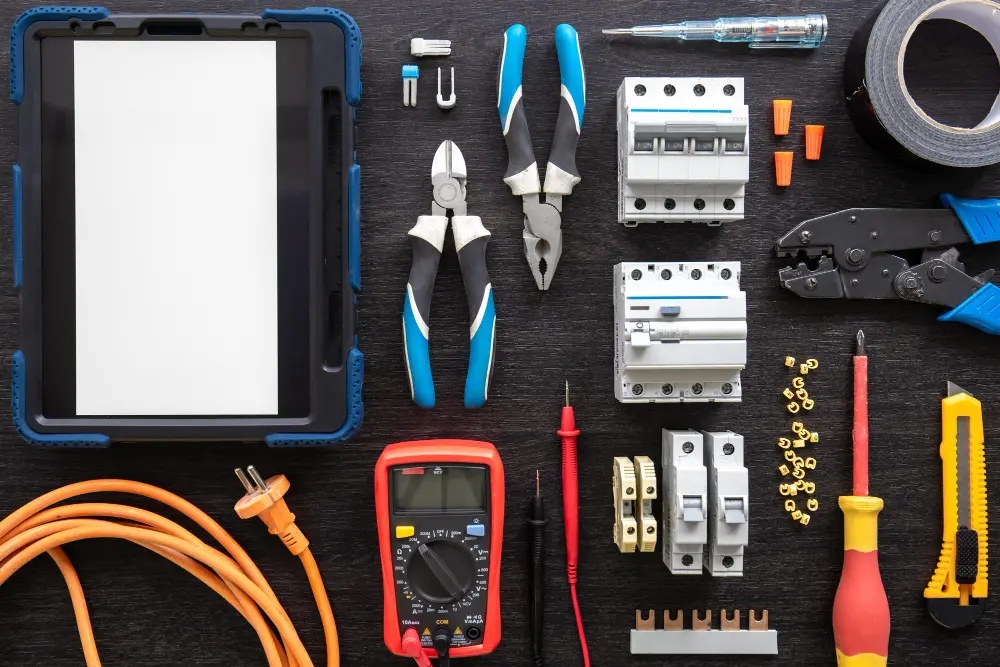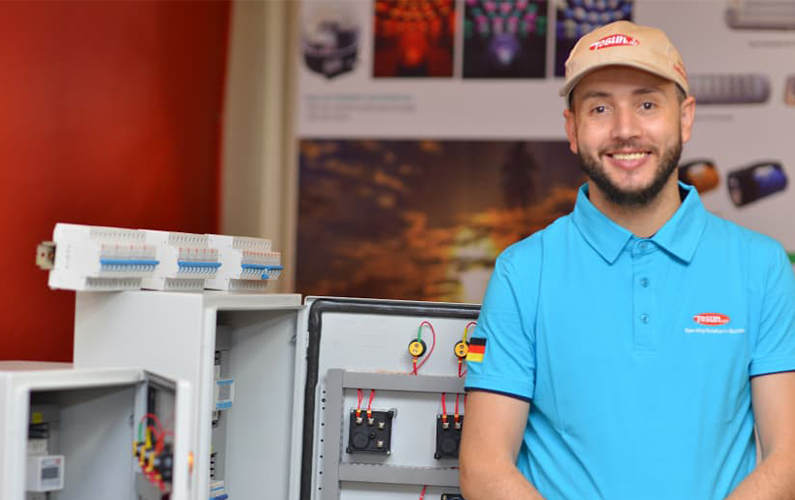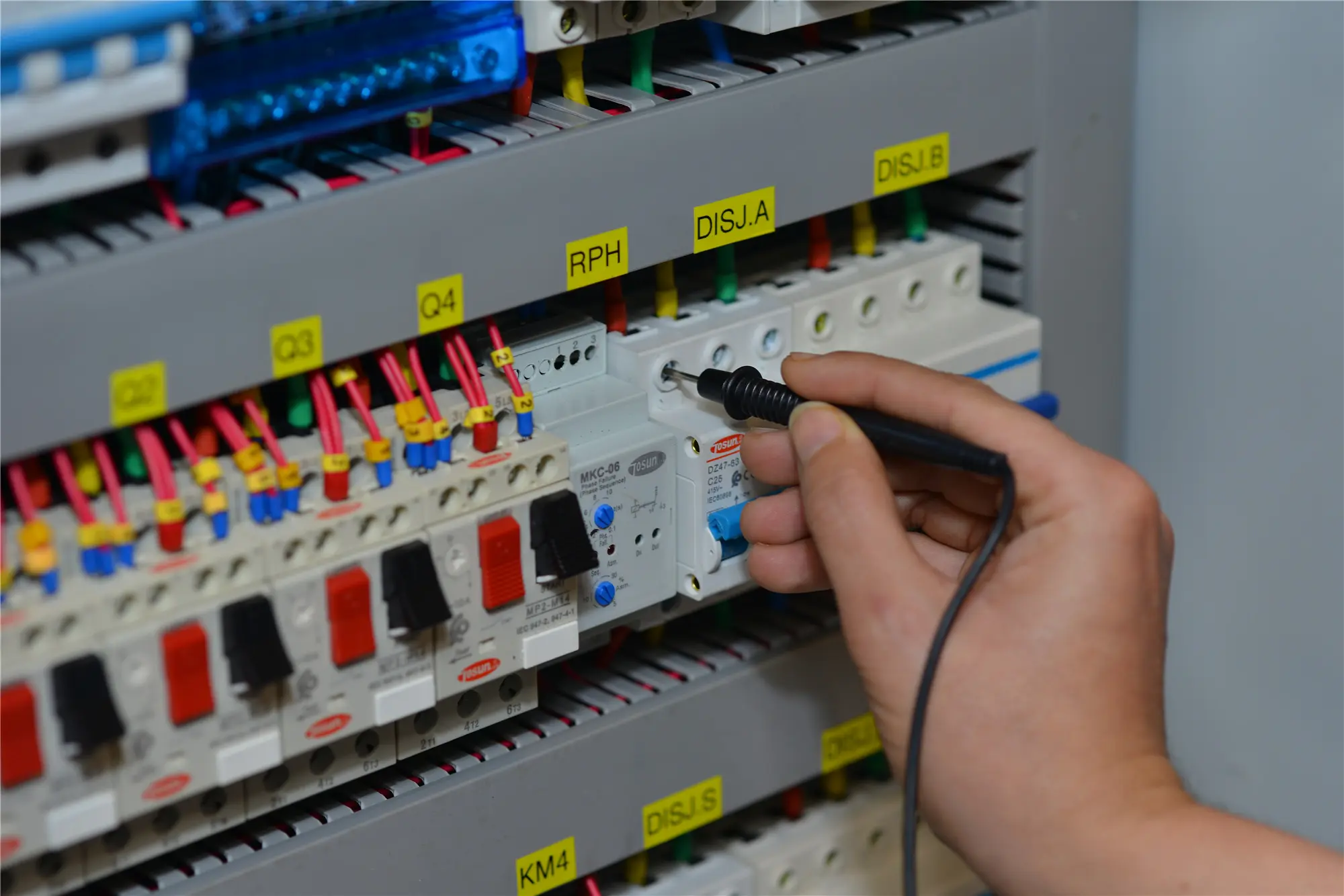Κοινές εφαρμογές των επαφέων AC στον βιομηχανικό αυτοματισμό
Πίνακας Περιεχομένων
ΜπαρέταIndustrial AC contactor devices switch motors, HVAC equipment, and lighting systems on and off automatically. These electromagnetic switches prevent equipment damage and enable remote operation of high-power electrical loads. Industrial control devices provide safe automation capabilities in manufacturing environments.
What Is an Industrial AC Contactor?
An industrial AC contactor is an electromagnetic switch that controls high-current electrical circuits. Motor starter contactor applications handle industrial motor control requirements. These devices manage currents from 10A to several hundred amperes.
AC magnetic contactor operation uses electromagnetic coils to move contacts. When energized, the coil pulls contacts together to complete circuits. When de-energized, contacts separate to break circuits.
Contactors have advantages over manual switches. They allow remote operation from control rooms. Industrial control devices enable automated system integration and safer equipment operation.

Why Do Motors Need Contactor Control?
Motor starter contactors are essential for protecting motors from damage during startup and operation. Motors draw high inrush current when starting that can be 6-8 times their normal running current. Standard switches cannot handle these current spikes safely.
Motor starter contactors provide controlled starting by handling inrush currents and protecting downstream equipment. They also enable remote motor control from control panels or automation systems. Remote control prevents operator exposure to high-voltage equipment.
Key motor control benefits include:
- Overload protection through integrated thermal relays
- Remote start/stop capability for safety
- Automatic operation through PLC integration
- Protection against voltage fluctuations
TOSUNlux AC unit contactor models provide reliable motor control with current ratings up to 95A for industrial applications.
What Are the Main Types of Industrial Contactors?
Electromechanical Contactors
Electromechanical contactors use electromagnetic coils to physically move contacts. When the coil energizes, magnetic force overcomes spring tension to close contacts. These devices handle high currents reliably and cost less than solid-state alternatives.
Electromechanical advantages include:
- Χαμηλότερο αρχικό κόστος
- High current handling capability
- Simple troubleshooting and maintenance
- Wide temperature operating range
Solid-State Contactors
Solid-state contactors use electronic components instead of mechanical contacts. They switch faster than mechanical types. They operate silently with no moving parts.
Solid-state benefits include:
- Faster switching speeds
- Αθόρυβη λειτουργία
- Longer lifespan with no contact wear
- Better performance with frequent switching
How Are Contactors Used in HVAC Systems?
HVAC systems rely heavily on contactors to control compressors, fan motors, and heating elements. These systems require reliable switching of high-power loads while maintaining precise temperature control.
Compressor contactors handle the challenging task of starting large refrigeration compressors. These motors have high starting torque requirements and significant inrush current. Contactors provide the robust switching needed for reliable operation.
Fan motor control through contactors enables automatic operation based on temperature sensors and building management systems. Multi-speed fan control uses multiple contactors to select different motor windings for variable airflow.
HVAC contactor applications include:
- Single-phase and three-phase compressor control
- Exhaust and supply fan motor switching
- Electric heating element control
- Heat pump reversing valve operation
What Role Do Contactors Play in Lighting Control?
Large-scale lighting systems use contactors to switch multiple circuits simultaneously. This application is common in warehouses, parking lots, and sports facilities where hundreds of lights need coordinated control.
Lighting contactors enable scheduled control through building automation systems. They can switch entire lighting zones based on occupancy sensors or daylight levels. This capability can reduce lighting energy consumption by 30-50% in commercial buildings.
Emergency lighting systems also use contactors to automatically switch to backup power during outages. The contactor transfers loads from normal power to emergency generators or battery systems.
How Do Contactors Enable Pump and Conveyor Control?
Industrial pumps require contactors for remote starting and emergency shutdown. Water pumps, chemical transfer pumps, and hydraulic systems use contactors to prevent pump damage from dry running or cavitation conditions. Remote operation allows operators to control pumps from safe distances during chemical handling operations.
Conveyor systems use forward and reverse contactors for bidirectional belt movement during loading and unloading operations. Emergency stop circuits use contactor coils to cut power immediately when safety sensors detect personnel in danger zones.
This prevents conveyor-related injuries during maintenance or cleaning operations. Pump control features include automatic operation based on pressure sensors, alternating pump operation, and emergency shutdown for leak detection.
Pump control features include:
- Automatic operation based on pressure or level sensors
- Alternating pump operation to distribute wear
- Emergency shutdown for leak detection
- Integration with process control systems
What Safety Features Do Industrial Contactors Provide?
Arc suppression is a critical safety feature in industrial contactors. When contacts open under load, electrical arcs form that can damage equipment and create fire hazards. Contactors include arc chutes and magnetic blowout coils to extinguish arcs quickly.
Mechanical interlocking prevents dangerous contact closure combinations. Reversing motor starters use mechanical interlocks to ensure forward and reverse contactors cannot close simultaneously. This prevents short circuits and equipment damage.
Auxiliary contacts provide status feedback to control systems. These normally open or normally closed contacts indicate the contactor position for monitoring and safety interlocking with other equipment.
How Do You Select the Right Industrial Contactor?
AC contractor selection requires understanding load requirements and operating conditions. You also need to evaluate different technical factors to achieve reliable operation.
Key selection factors include:
- Voltage rating must equal or exceed the maximum system voltage
- Current rating should handle normal load plus a 25% safety margin
- Contact configuration (1-pole, 3-pole, or 4-pole) based on system type
- Environmental protection (IP rating) for dust and moisture conditions
- Coil voltage matching control system requirements
- Mechanical life rating appropriate for switching frequency
Contact configuration determines switching capability. Three-pole contactors work for three-phase motors while single-pole versions handle lighting loads. Four-pole contactors provide neutral switching for three-phase systems.
How Can You Avoid Common Contactor Problems?
Undersized contactors generate excessive heat, leading to contact welding and coil burnout within months. Common problems in the use of AC contactors include contact pitting from arc damage, coil resistance drift, and mechanical binding from contamination.
Maintenance schedules based on switching frequency prevent unexpected failures:
- High-frequency applications (>10 cycles/hour): Monthly inspection
- Medium-frequency applications (1-10 cycles/hour): Quarterly inspection
- Low-frequency applications (<1 cycle/hour): Annual inspection
Contact replacement typically occurs after 100,000-500,000 operations depending on load conditions. Three-phase motors require contactors rated for 6-8 times full load current to handle starting inrush without contact welding.
Συχνές ερωτήσεις
What is the difference between a contactor and a relay?
Contactors handle higher currents (typically above 10A) and include arc suppression features. Relays work with lower currents and provide signal switching in control circuits.
How long do industrial contactors typically last?
Properly maintained contactors last 5-10 years depending on switching frequency and load conditions. Mechanical life ranges from 1-10 million operations whereas electrical life varies with load current.
Can contactors be used for both AC and DC applications?
AC and DC contactors have different designs. AC contactors rely on natural current zero-crossing for arc extinction while DC contactors need special arc suppression features.
Σύναψη
When selecting contactors for your facility, match current ratings to your motor loads and consider your operating environment. Choose contactors rated for 6-8 times motor full-load current to handle startup conditions. Regular inspection of contacts and connections will keep your systems running reliably for years.
Τηλ: +86-577-88671000
E-mail: ceo@tosun.com
Skype: tosnelectric
Wechat: +86-139 6881 9286
WhatsApp: +86-139 0587 7291
Διεύθυνση: Room No. 1001 Wenzhou Fortune Center, Station Road, Wenzhou, Κίνα
ΖΗΤΗΣΤΕ ΠΡΟΣΦΟΡΑ
WhatsApp μας
 : +86-139 0587 7291
: +86-139 0587 7291 αγγλικός
αγγλικός Español
Español Русский
Русский Français
Français العربية
العربية Português do Brasil
Português do Brasil Українська
Українська Türkçe
Türkçe Polski
Polski Ολλανδία
Ολλανδία ιταλικό
ιταλικό Μπαχάσα Ινδονησία
Μπαχάσα Ινδονησία हिन्दी
हिन्दी اردو
اردو አማርኛ
አማርኛ Ελληνικά
Ελληνικά ไทย
ไทย Μογγολικά
Μογγολικά فارسی
فارسی Shqip
Shqip Ελληνικά
Ελληνικά


